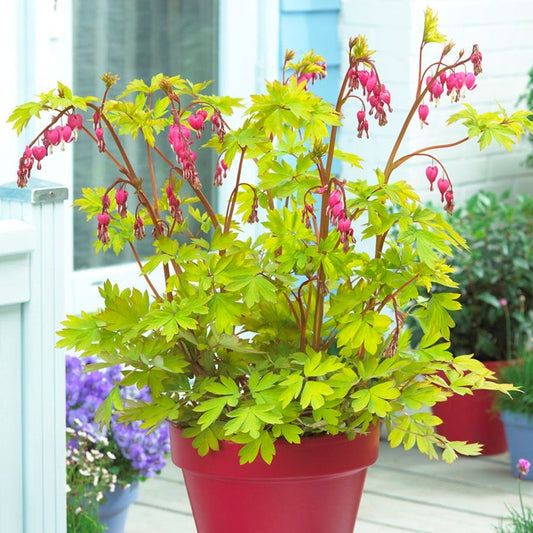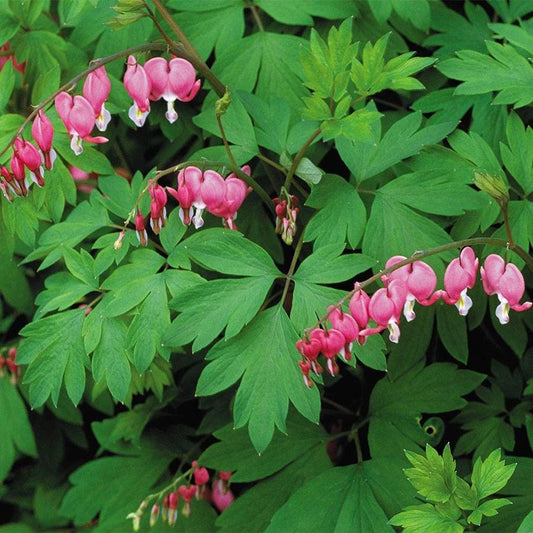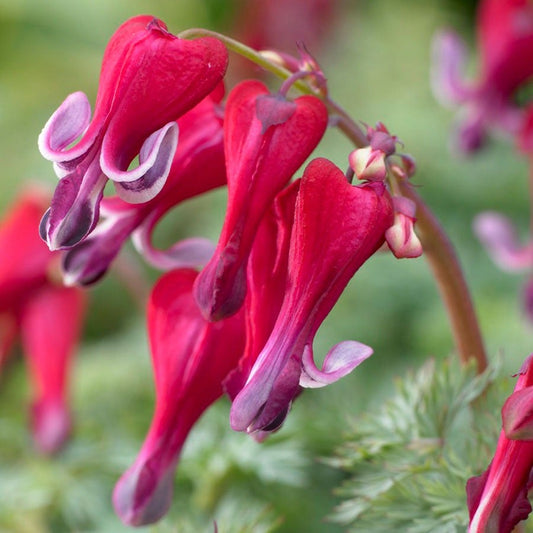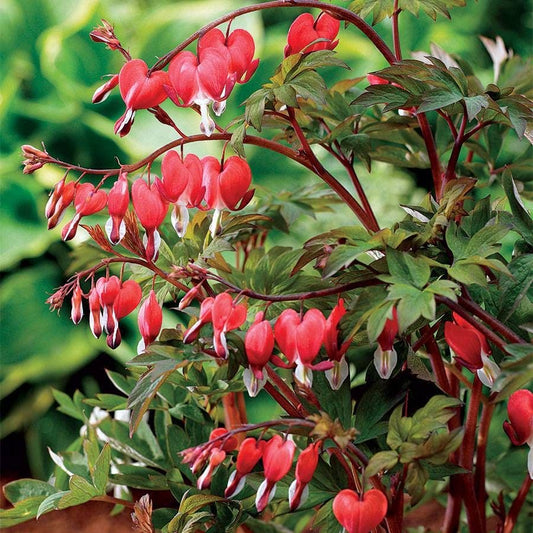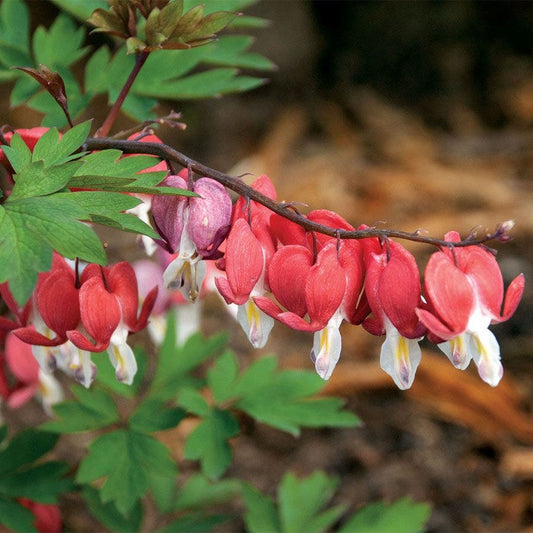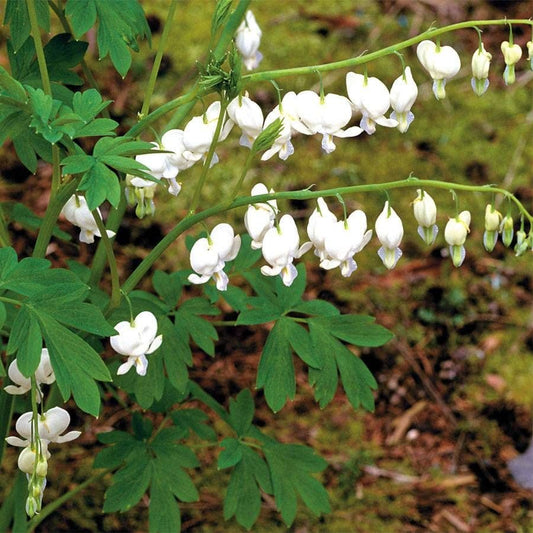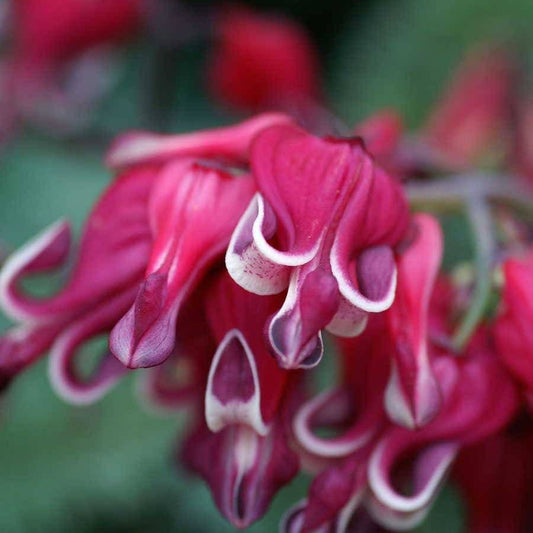Dicentra / Bleeding Heart
-
Dicentra 'Gold Heart' Bleeding Heart
Regular price $22.95Regular priceUnit price per -
-
Dicentra 'Fire Island' Bleeding Heart
Regular price $25.95Regular priceUnit price per -
-
-
Dicentra 'Stuart Boothman'
Regular price $21.95Regular priceUnit price per -
-
Dicentra 'Burning Hearts'
Regular price $24.95Regular priceUnit price per -
-
-
Dicentra / Bleeding Heart
Hardy, low maintenance, and attractive even when not in bloom
The genus Dicentra contains herbaceous annuals and perennials, commonly called bleeding hearts, that typically flower in late spring and early summer, with some cultivars reblooming in fall. An elegant, old-time favorite, Dicentra / Bleeding Heart is a flowering woodland plant grown for its attractive foliage and gracefully arching leafless stems displaying sprays of dangling, puffy heart-shaped flowers in shades of red, pink, purple, or white. The flowering stems attract butterflies and hummingbirds and last up to 2 weeks in a vase.
Dicentra is a genus of approximately 20 or more species that range in size from 1 foot to 3 feet tall and about as wide. There are 2 main species: D. spectabilis (common or old-fashioned bleeding heart), which tend to be the taller, and Dicentra formosa (Pacific bleeding heart, western fringed bleeding heart), which are smaller but spread slowly by extensive rhizome systems to establish colonies. Hardy and low maintenance, bleeding hearts grow best in light shade but tolerate full sun in cool, moist climates. In most locations, a combination of morning sun and afternoon shade is ideal. The plants prefer humus-rich, moist but well-drained soil. They tolerate clay and sandy soil but will not tolerate soggy soils. Dicentra / Bleeding Heart grows fairly quickly and are attractive when not in flower. However, they usually go dormant in hot summer months and, basically, disappear, sometimes reemerging in cool fall temperatures. Ferns, hosta, hardy geranium, and astilbe are good companion plants, as they fill in as the bleeding hearts decline. The plant is considered toxic and should be kept out of the reach of children and animals.

